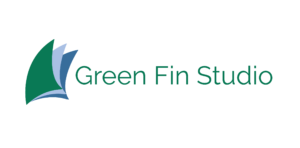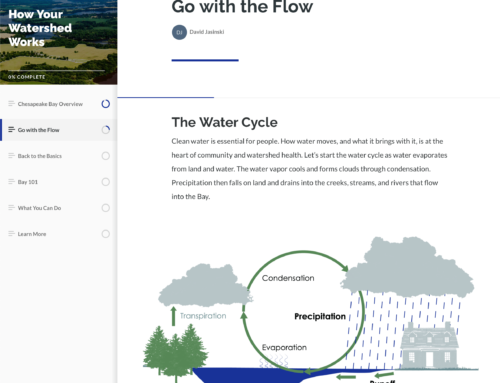 Some of our favorite projects are the ones where we get to expand our knowledge about a subject. We get to immerse ourselves in an interesting topic and, at the end of the project, we come out of it inspired, energized, and a little smarter. The work we recently completed with the Chesapeake Bay Program’s Submerged Aquatic Vegetation (SAV) Workgroup was one of those delightful efforts. It included many moving pieces and the contributions of several experts in SAV science and restoration and culminated in an illustrated guide to the restoration of SAV in the Chesapeake Bay and several related outreach materials. Check them all out at the Chesapeake Bay Program’s website.
Some of our favorite projects are the ones where we get to expand our knowledge about a subject. We get to immerse ourselves in an interesting topic and, at the end of the project, we come out of it inspired, energized, and a little smarter. The work we recently completed with the Chesapeake Bay Program’s Submerged Aquatic Vegetation (SAV) Workgroup was one of those delightful efforts. It included many moving pieces and the contributions of several experts in SAV science and restoration and culminated in an illustrated guide to the restoration of SAV in the Chesapeake Bay and several related outreach materials. Check them all out at the Chesapeake Bay Program’s website.
Submerged Aquatic Vegetation (SAV) – Underwater plants that grow in the shallow waters of bays, streams, creeks and rivers. They are a critical habitat and food source for aquatic animals and play an important role in supporting water quality. See the figure below, taken from the guide, for a summary of ecosystem services provided by SAV.

This project started with in-depth information gathering. The Green Fin Studio team, along with collaborator Cassie Gurbisz (Saint Mary’s College of Maryland), dove deep into the scientific literature on SAV and interviewed several experts in the field. This work resulted in a literature review that laid the groundwork for the rest of the project.
We then began the task of creating a user-friendly guide for environmental organizations, local jurisdictions, federal and state agencies, and anyone with an interest in the Chesapeake Bay and its living resources. We used multiple strategies for keeping the somewhat dense and technical content engaging, including:
- incorporating adequate white space to prevent reader fatigue,
- including large format photographs, and
- creating custom graphics to illustrate the trickier concepts.
For some of the graphics, we took an artistic approach. Our team created watercolors of the many SAV species featured in the guide. These beautiful works of art help to draw readers in and make the product stand out.

The first figure in the guide shows the common SAV species found in Chesapeake Bay and the salinity zones in which they grow, featuring watercolor illustrations of each species.
To give people a snapshot of the guide and its contents, we developed supporting outreach materials. These included: a quick start guide, a fact sheet, and a bookmark. Each of these products acts as a gateway to pique interest and encourage folks to find more information in the guide itself. Creating this suite of gateway products expands our audience and increases the number of pathways that can bring a person to use the guide – we want it to be used after all, not gather dust on a shelf!
March is right around the corner, and with it comes Seagrass Awareness Month. If you have an interest in SAV or coastal ecosystems in general, please check out the restoration guide or any of the other products.
Looking for a science-savvy team to make a public-friendly technical manual or guide, or perhaps a suite of connected products to help you or your organization reach a goal? We’d love to chat.

